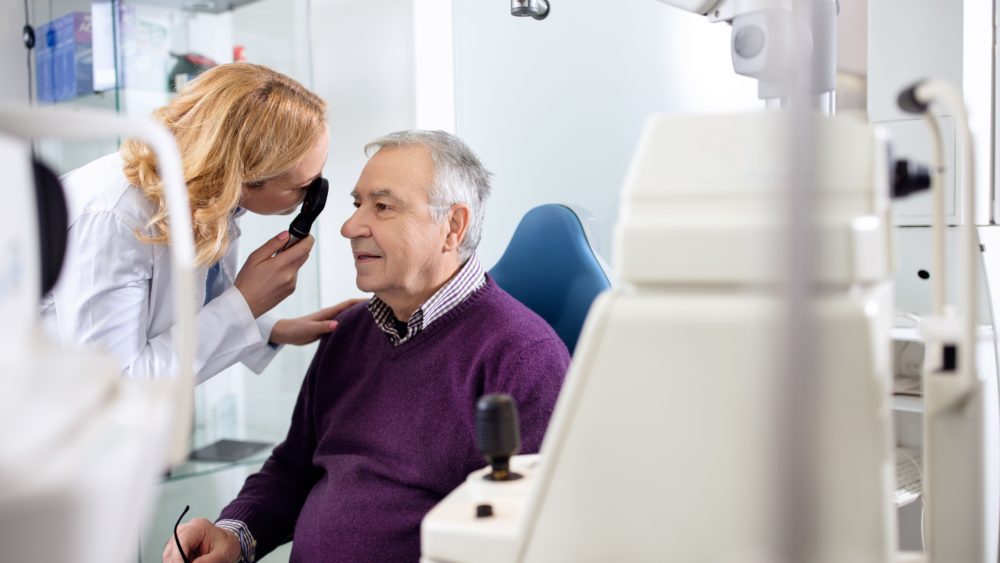
While the most common prescription lens type is still the single vision lens, bifocal and progressive lenses are popular prescription requests. Both of these types of lenses serve essentially the same purpose: they have different areas in the lens used for viewing at different distances. The larger portion of the lens is used for viewing things that are farther away, while the smaller portion of the lens towards the bottom is used for viewing up close.
Adding bifocals or progressive lenses to a prescription is primarily a matter of convenience. As the eyes age and our need for magnification increases, we may need a stronger pair of glasses for reading up close. Sometimes you will see a person with two pairs of glasses — one is used to correct their regular vision while another pair is used strictly for reading. Bifocal and progressive lenses eliminate the need to carry around an extra pair of glasses and ensure that the wearer can see well at any distance.
Bifocal Lenses
When you think of a person wearing bifocal lenses, you might picture a granny in a rocking chair type scenario. But bifocals work well for a wide variety of prescription lens wearers. The way to identify a bifocal lens (or the less popular trifocal lens) is by the visible line on the lens. It’s easy to see on a lens where the regular lens ends and the bifocal begins. It’s also fairly easy for the wearer to find the reading portion of the lens, towards the bottom, when it is needed.
The first few times a person wears bifocals, they may require some getting used to — especially if they have only ever worn single vision lenses. There is an “image jump” when the wearer looks into the magnification portion of the lens and can take some getting used to.
Progressive Lenses
Progressive lenses are another type of lens that allows the wearer to see well both at a distance and close up. However, progressives have a few key differences from bifocal lenses. The first and most noticeable difference is that there are no visible lines on progressives like the ones you can see on bifocals. Unless you are wearing the glasses, there is no way to tell that the lenses have multiple viewing areas.
The second key difference between progressives and bifocals is what makes them “progressive”. Bifocals have two distinct viewing areas, but progressives change power gradually as they move through multiple viewing areas.
Finally, progressive lenses have three different areas of power, as opposed to two areas in bifocals. The primary part of the lens is for distance viewing and a smaller part of for up-close viewing and reading. A third area and the smallest of the three is used for intermediate viewing like computers.
Like bifocals, wearing progressives can take some getting used to and require a period of adjustment. Even a change in prescriptions for someone who has previously worn progressives can require some time to acclimate.
Both bifocals and progressive lenses can solve the issue of needing prescription lenses for up close and near viewing. Progressive lenses have the added benefit of intermediate viewing and don’t show the telltale lines of bifocals. Whichever option a patient needs or chooses, Allentown Optical provides the best in wholesale optical products and services for eyecare professionals.
